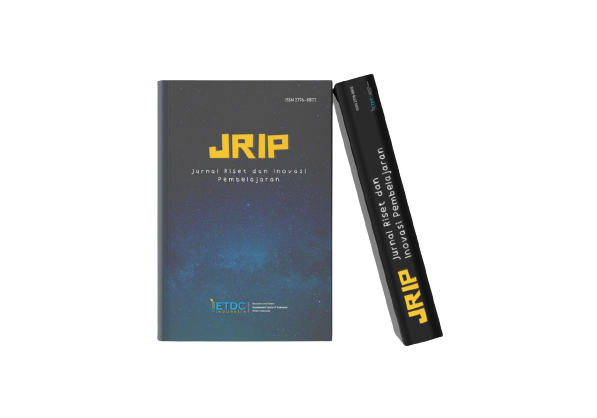Students' Needs and Preferences for Digital EFL Learning Materials
https://doi.org/10.51574/jrip.v4i2.1780
Keywords:
Digital, EFL, Learning Material, Need Analysis, SambasAbstract
While research on digital language learning materials has received lots of attention, there was a scarcity of studies focusing on specific locations, like Sambas in West Kalimantan, Indonesia. Located near the border of Indonesia and Malaysia, Sambas has a unique EFL learning environment influenced by its geographical location and diverse socio-economic backgrounds. Understanding students' needs and preferences in local contexts is crucial in designing culturally relevant teaching materials. This study aimed to assess the needs and preferences of students in Sambas and provided valuable insights into optimizing the utilization of digital teaching materials for English language learning. This study employed a survey research design to elicit information about current materials, the student's needs, perceptions, and preferences concerning digital materials in English students' needs and preferences, and technological resources. The participants of this study were first-year students of junior secondary school (20 students) in Sambas. The findings revealed that students need videos, movies, and songs with English subtitles as learning materials. Furthermore, the study might shape future research in developing and implementing digital EFL materials customized to the Sambas' cultural context, including local language, customs, and traditions, and their effectiveness in engaging students and improving English language acquisition.
Downloads
References
Abdul Syakur, Esti Junining, M. Khusni Mubarok, & Margarana. (2020). Developing English for Specific Purposes (ESP) Textbook for Pharmacy Students Using On-Line Learning in Higher Education. Britain International of Linguistics Arts and Education (BIoLAE) Journal, 2(1). https://doi.org/10.33258/biolae.v2i1.216
Avezova, N. B. (2022). Methods of teaching english to young learners. Uchenyy xxi veka, 7. https://doi.org/10.15350/24103586.2022.7.14-19
Basuki, Y., Damayanti, A., & Dewi, S. U. (2018). Vocabulary coursebook for EFL learners of higher education in Indonesia. International Journal of Education and Literacy Studies, 6(4), 122. https://doi.org/10.7575/aiac.ijels.v.6n.4p.122
Desi Rizma Yanti, A. H. (2019). The importance of needs analysis in materials development. Jurnal Ilmiah Profesi Pendidikan, 4(2). https://doi.org/10.29303/jipp.v4i2.88
Gonzalez, F. O. S. (2020). Subjective needs analysis: A vital resource to assess language teaching. Mextesol Journal, 44(3).
Hadi, M. S. (2019). The use of song in teaching English for junior high school student. English Language in Focus (ELIF), 1(2). https://doi.org/10.24853/elif.1.2.107-112
Hardiyanto, A. (2020). Developing e-book for pre-intermediate grammar in efl classroom. Premise: Journal of English Education, 9(2). https://doi.org/10.24127/pj.v9i2.3058
Hutauruk, R. (2020). Needs analysis for english teaching/ curriculum development in indonesian senior high schools. Language Research Society, 1(1). https://doi.org/10.33021/lrs.v1i1.1036
Ikhsanudin, I. (2020). Pembelajaran dan bahan ajar bahasa: pengantar teoretis yang disederhanakan. Kubu Raya: Pustaka Adi Ridwan.
Ikpeze, C. H. (2018). Designing e-books: enhancing prospective teachers’ digital literacy skills. In Literacy Research, Practice and Evaluation (Vol. 9, pp. 29–42). Emerald Group Publishing Ltd. https://doi.org/10.1108/S2048-045820180000009003
Lapele, F. (2019). Need analysis on the material development of teaching ESP speaking. ETERNAL (English, Teaching, Learning, and Research Journal), 5(2). https://doi.org/10.24252/eternal.v52.2019.a13
Mishan, F., & Timmis, I. (2015). Materials development for TESOL. In Materials Development for TESOL. https://doi.org/10.1093/elt/ccx062
Muthmainnah, Aeni, N., Galal, M., Varghese, K. J., Castillo, F. Del, & Ghofur, A. (2021). The Students’ Needs in Developing EFL Materials ICT Based. OKARA: Jurnal Bahasa Dan Sastra, 15(2). https://doi.org/10.19105/ojbs.v15i2.4679
Nida, C. F. (2021). The perspective of sla principles of materials analysis on a thematic english textbook for sixth-grade elementary school. JOALL (Journal of Applied Linguistics and Literature), 6(2). https://doi.org/10.33369/joall.v6i2.13667
Nur Fitria, T. (2022). Using authentic material and created material (teacher-made) for english language teaching (ELT): benefits and limitations. JADEs Journal of Academia in English Education, 3(2). https://doi.org/10.32505/jades.v3i2.4674
Rusmanayanti, A. (2019). Songs from Youtube as an alternative media innovation for teaching and learning English. Getsempena English Education Journal (GEEJ), 6(1).
Salmani-Nodoushan, M. A. (2020). English for specific purposes: Traditions, trends, directions. Studies in English Language and Education, 7(1). https://doi.org/10.24815/siele.v7i1.16342
Yang, L., & Coxhead, A. (2022). A corpus-based study of vocabulary in the new concept english textbook series. RELC Journal, 53(3), 597–611. https://doi.org/10.1177/0033688220964162
Downloads
Published
How to Cite
Issue
Section
License
Copyright (c) 2024 Mulyati Herman, Regina, Yohanes Gatot Sutapa Yuliana

This work is licensed under a Creative Commons Attribution-ShareAlike 4.0 International License.













